

Matt Campbell
2026 MG U9 review
5 Hours Ago
The CX-8 will depart Mazda showrooms soon, depriving Australia of another compelling, diesel-powered crossover.

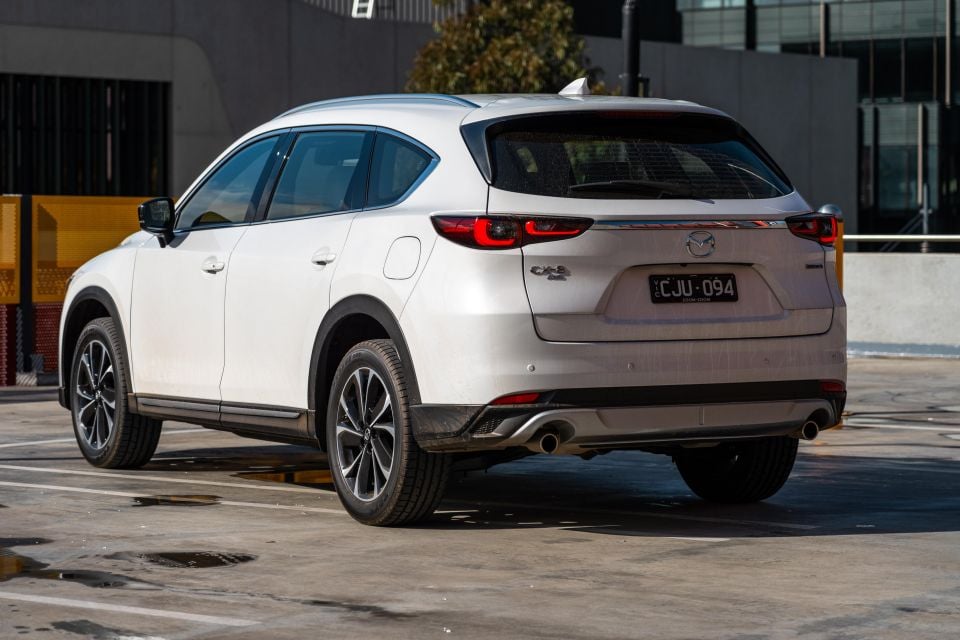

Quickly see how this car stacks up against its competition. Select any benchmark to see more details.
Where expert car reviews meet expert car buying – CarExpert gives you trusted advice, personalised service and real savings on your next new car.
If you want to buy a new Mazda CX-8, you had better be quick.

Despite releasing a facelifted version in March 2023, and telling CarExpert in July it planned to keep it around, Mazda announced in October it was pulling the plug on this stretched, three-row CX-5 derivative.
It may have some life left in it over in Japan, but remaining stock will essentially be gone in Australia by the second quarter of 2024.
Why is Mazda killing this relatively popular three-row crossover? Quite simply, it’s clearing the decks for its new premium SUVs. The mid-sized, two-row CX-60 and large, three-row CX-90 are already here, and a stretched, three-row version of the former – the CX-80 – has been locked in for a local launch.
With the CX-9 having ended production, Mazda is therefore giving its three-row models more expensive, more aspirational replacements.
The new Large Architecture-based SUVs are good, but they’re out of reach for a lot of Australian new car buyers. It’s a shame, then, to see the CX-8 go.
Not only is it dying, it’s taking its delightful twin-turbo diesel four-cylinder engine with it. This engine has already been retired from the CX-5, making the CX-8 the last Australian-market Mazda to offer it.
The Mazda CX-8 is offered in nine separate variants, with prices ranging from $42,660 to $72,010 before on-roads.
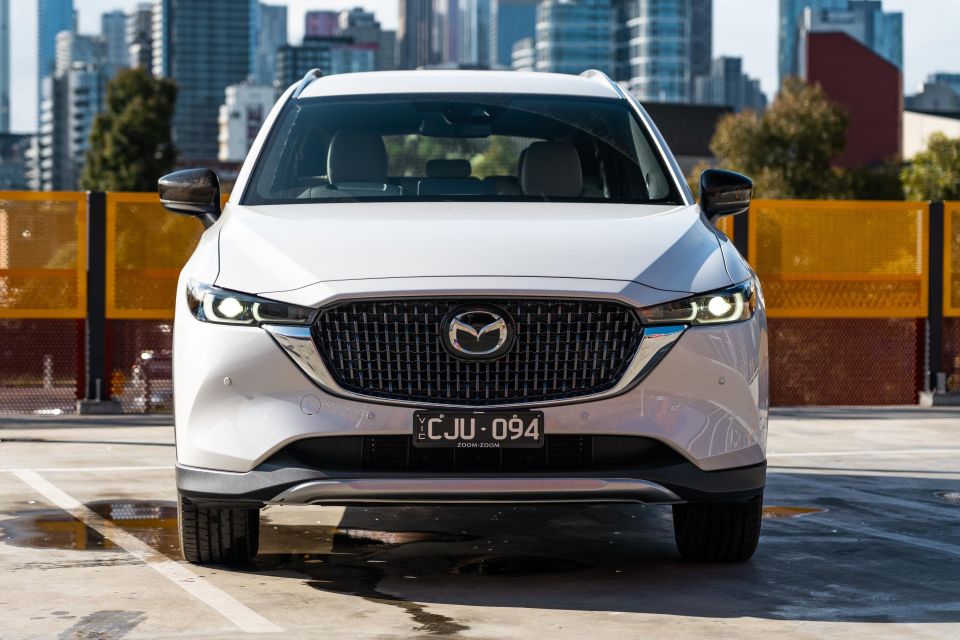
The D35 Touring Active tested here sits somewhere in the middle, priced at $57,510 before on-roads. It’s the second-most affordable diesel CX-8, with the D35 Sport priced at $49,660 before on-roads.
Jet Black Mica, Titanium Flash Mica, Platinum Quartz and Deep Blue Crystal Mica are the standard paint finishes; though, you can pay $795 extra to get Rhodium White, Machine Grey or Soul Red Crystal metallic finishes or Polymetal Grey.
You can pay an extra $2000 over the Touring Active to step up to the better-equipped GT SP, but you lose all-wheel drive and step down to a less appealing naturally aspirated petrol four-cylinder engine. Sadly, Mazda Australia never saw fit to offer the turbocharged 2.5-litre petrol engine in the CX-8.
The most obvious rival for the CX-8 is the Volkswagen Tiguan Allspace, which is also a stretched, three-row version of a regular mid-sized SUV.
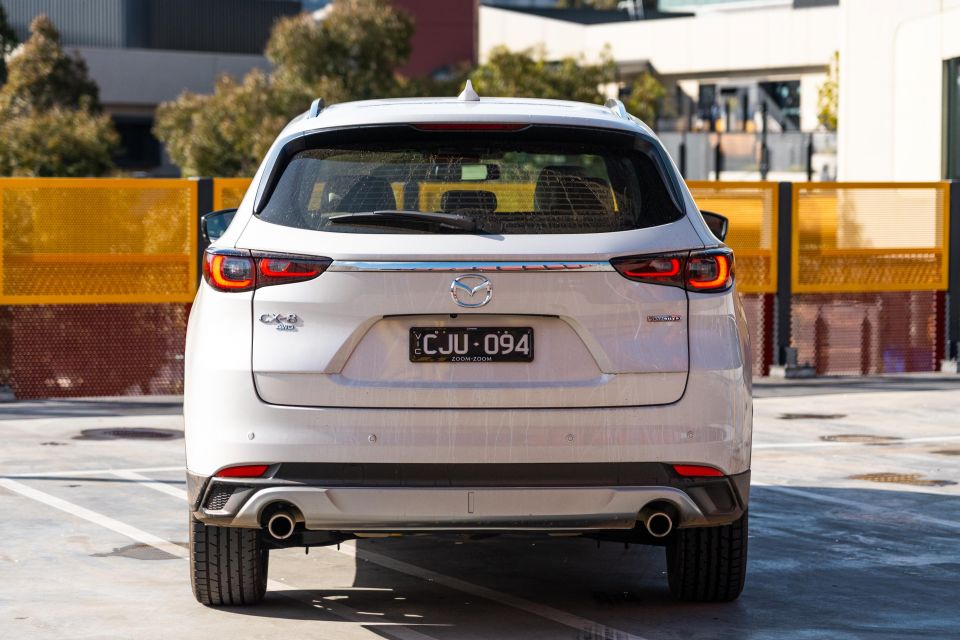
You can also count among the CX-8’s rivals the Tiguan’s Skoda Kodiaq cousin, plus anything from mid-sized SUVs with available third rows (Honda CR-V, Mitsubishi Outlander, Nissan X-Trail) to vehicles in the segment above (Hyundai Santa Fe, Kia Sorento).
Only the Santa Fe and Sorento offer a diesel engine, with the Tiguan Allspace recently losing its diesel option.
Buy your new car without the stress. It's fast, simple and completely free.

Great service from Travis and team, second time I have used this business would not hesitate to recommend them to anyone
Craig C.
Purchased a Ford Ranger in Sunshine Coast, QLD
CarExpert helped Craig save thousands on his Ford Ranger, now let us save you on your next new car.
Find a dealThe Touring Active’s distinctive interior mightn’t be the most desirable choice for families, for whom wipe-clean leatherette or leather is preferable, but damned if it isn’t distinctive.
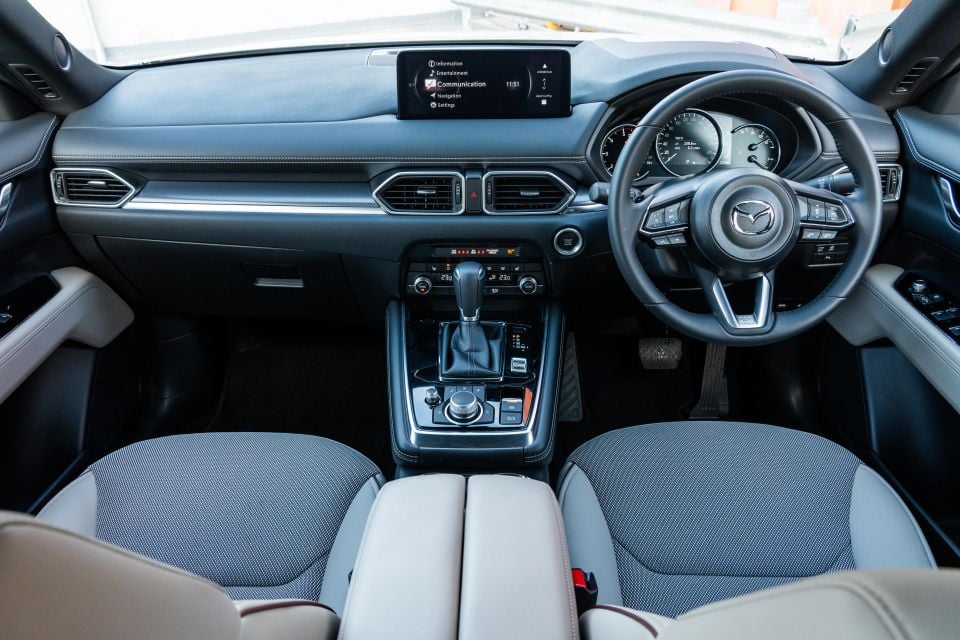
Leatherette is used on the seat bolsters, but it’s finished in a pale stone colour. Between the bolsters there’s a lovely textured cloth, again in a pale colour, and the overall look is almost retro – and in an utterly delightful way.
The heated front seats are comfortable and supportive, too.
The stone leatherette can be found on the doors, contrasted with black trim with pale stitching elements. The dashboard, too, is black with pale stitching.
For more contrast, there’s gloss black trim on the doors and centre console, plus metal-look trim on the dashboard.

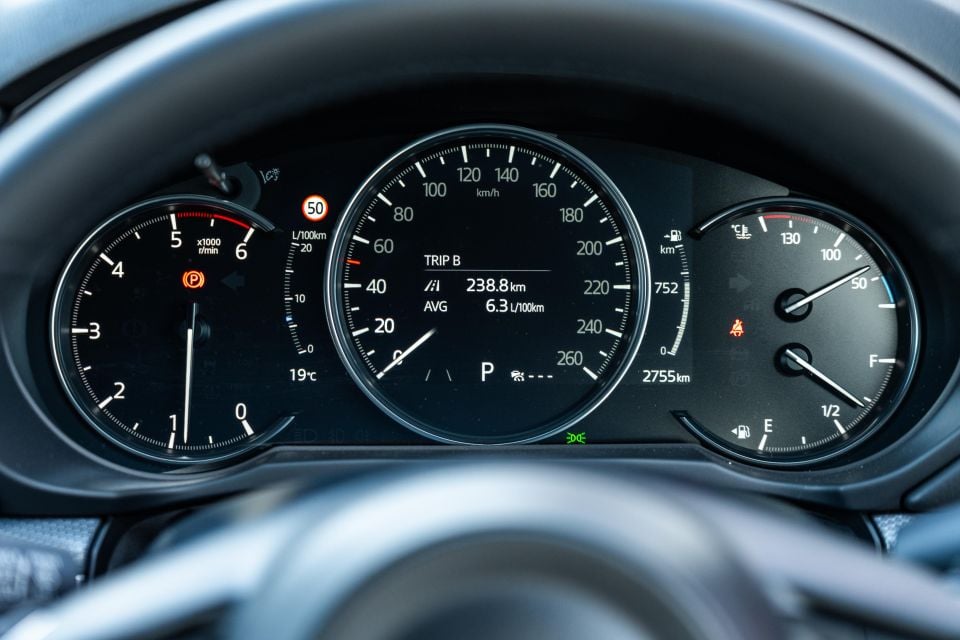
It all comes together nicely; though, we could do without the scratch- and smudge-prone gloss black trim.
The switchgear is tactile, too, particularly the lovely knurled dials for the climate control, which have a satisfying operation.
Material quality, as expected of a Mazda, is excellent. There’s leatherette trim on the sides of the centre console, again with contrast stitching, while the top of the dashboard and the upper half of the door trims are all finished in soft-touch trim.
If you are concerned about stains, stepping down to the Touring gets you black leather upholstery, which can also be found one rung up in the GT SP.
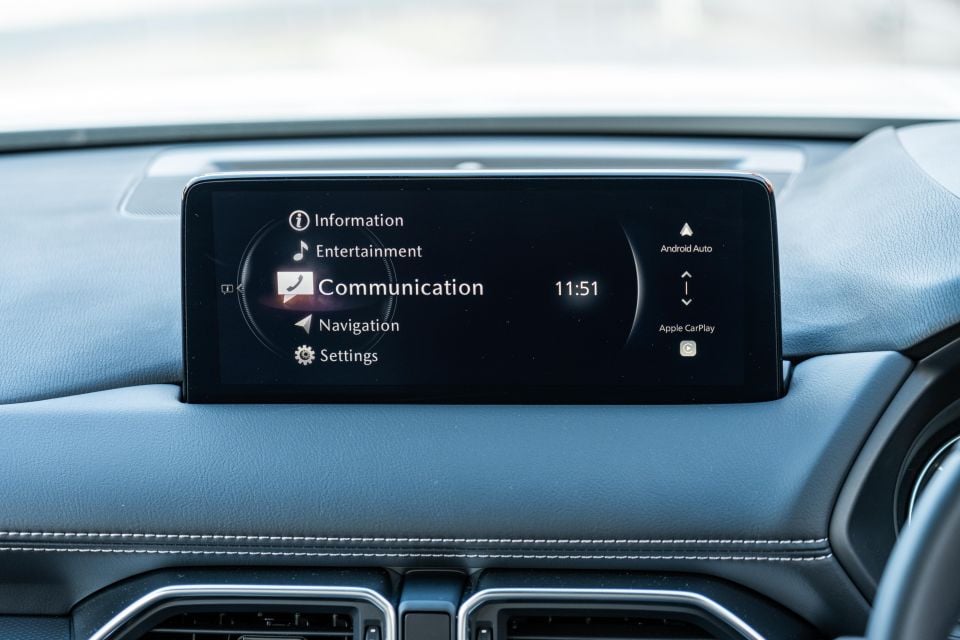
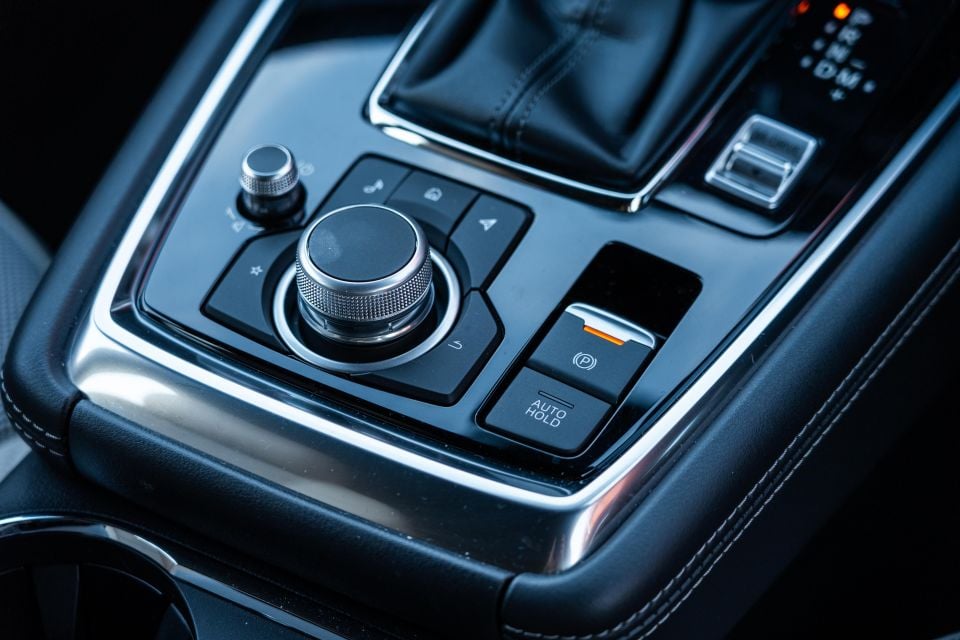
Mazda has been very erratic with its stance on touchscreens.
The older systems found in models like the Mazda 2 have touch functionality when stationary, the newest systems found in the CX-60 and CX-90 have all-speed functionality but only for smartphone mirroring, and the CX-8 misses out on any type of touch functionality.
Mazda’s slick infotainment interfaces and rotary dial mean that’s not too much of a bother, unless you’re using Apple CarPlay or Android Auto.
Then, those particularly touch-optimised mirroring systems become a hassle to use without being able to touch the screen.
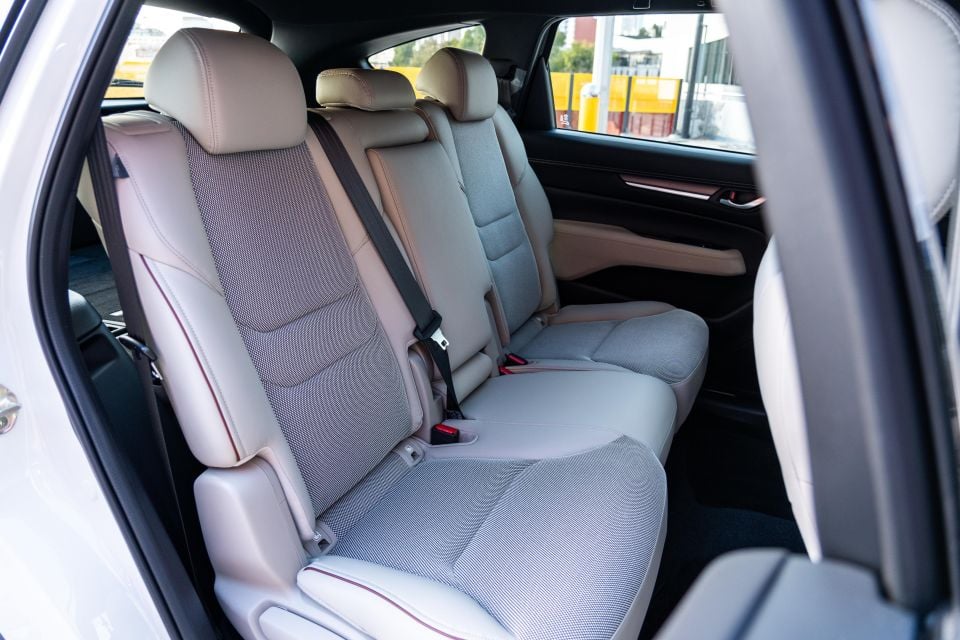
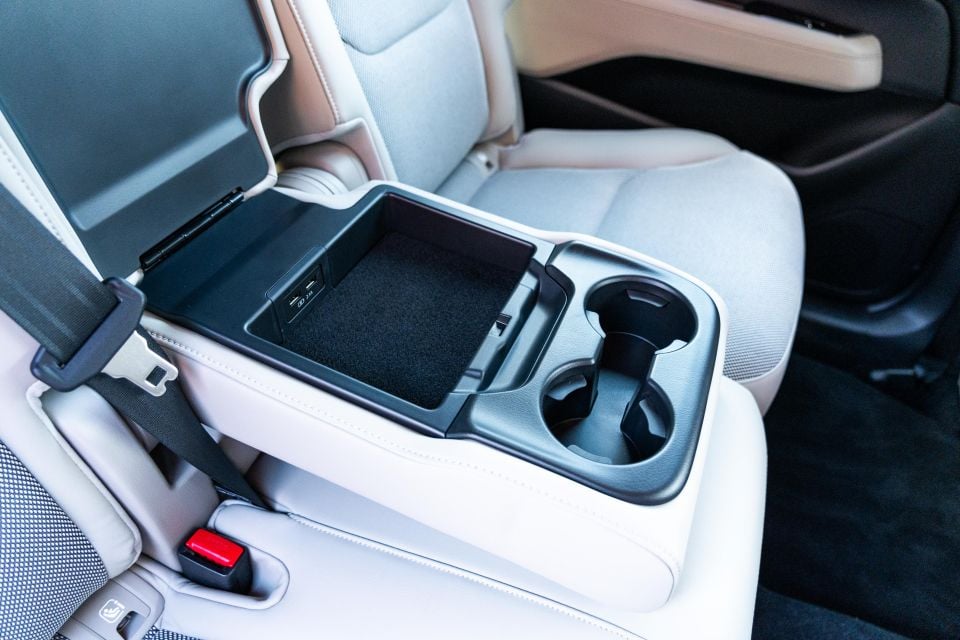
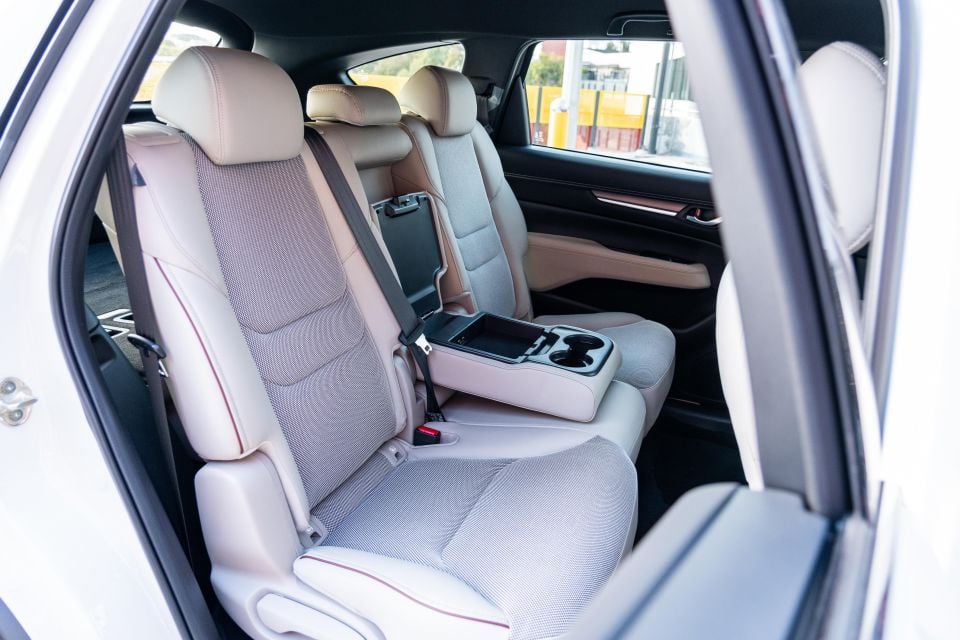
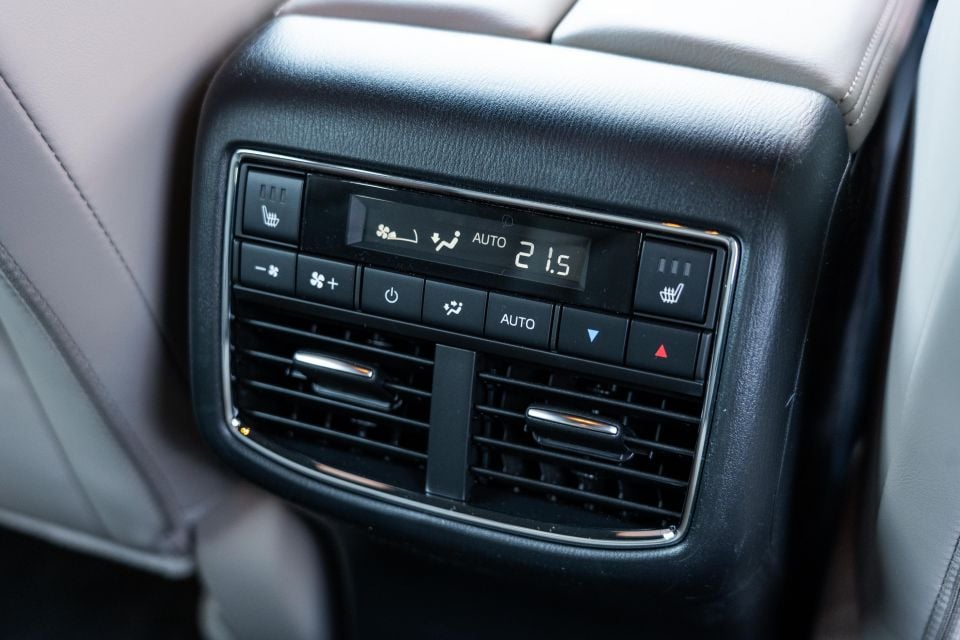
Regardless of whether you’re using Google Maps or the factory navigation, turn-by-turn instructions will appear in the head-up display.
The display also has handy blind-spot indicators as well. Kudos to Mazda for developing not only a great HUD, but making it widely available across its model line-up.
The instrument cluster isn’t anything fancy, featuring a 7.0-inch screen camouflaged as a third analogue dial. It works well; though, and is nice and legible.
Second-row space isn’t earth-shattering but it’s hardly cramped. The outboard seats are heated, with a fold-down armrest revealing two cupholders and two USB-A outlets. Air vents can be found at the rear of the centre console along with rear climate controls.
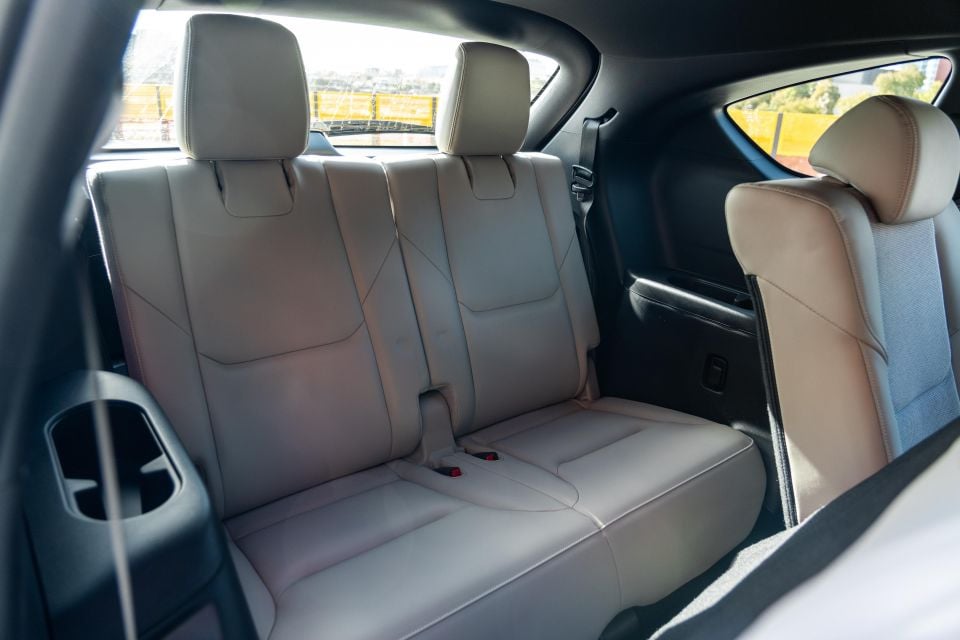
The CX-8 is essentially a stretched CX-5, so it could never offer the width of the moribund CX-9. Being shorter overall, it also can’t match it for third row space.
It’s a bit better than the “bonus” third row found in some mid-sized SUVs like the Outlander, and is about on par with a Santa Fe or Sorento.
Nevertheless, the third-row seats are best suited to kids. At 180cm tall, if I sit upright I find my head brushing the roof. Toe room is limited and knee room is average.
There aren’t many amenities back here, in contrast with a Santa Fe Elite. There are cupholders on either side, but you need to step up to the GT SP to get a pair of USB-A outlets back here. No CX-8 can be had with third-row air vents, disappointingly.
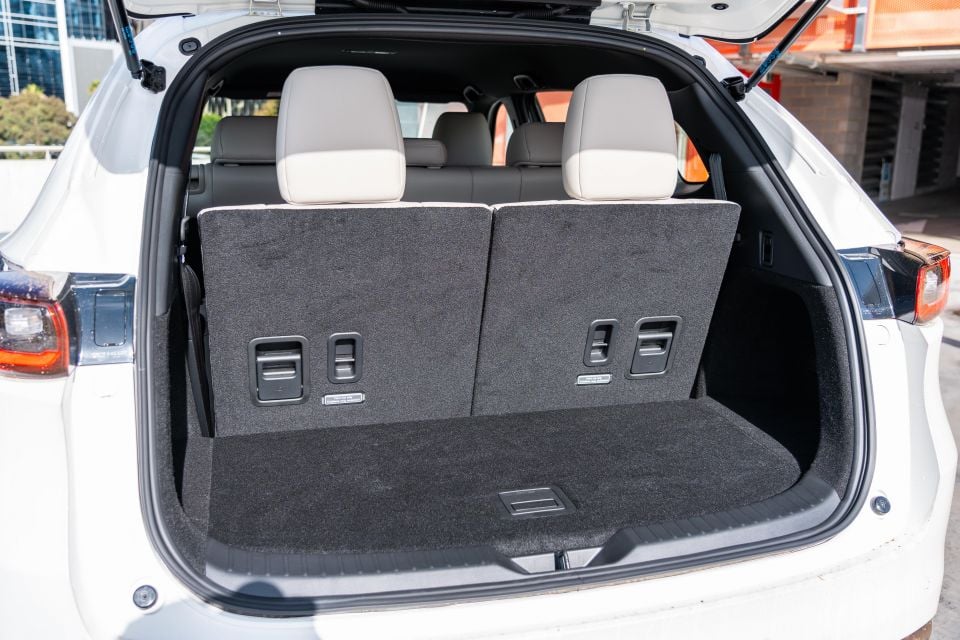
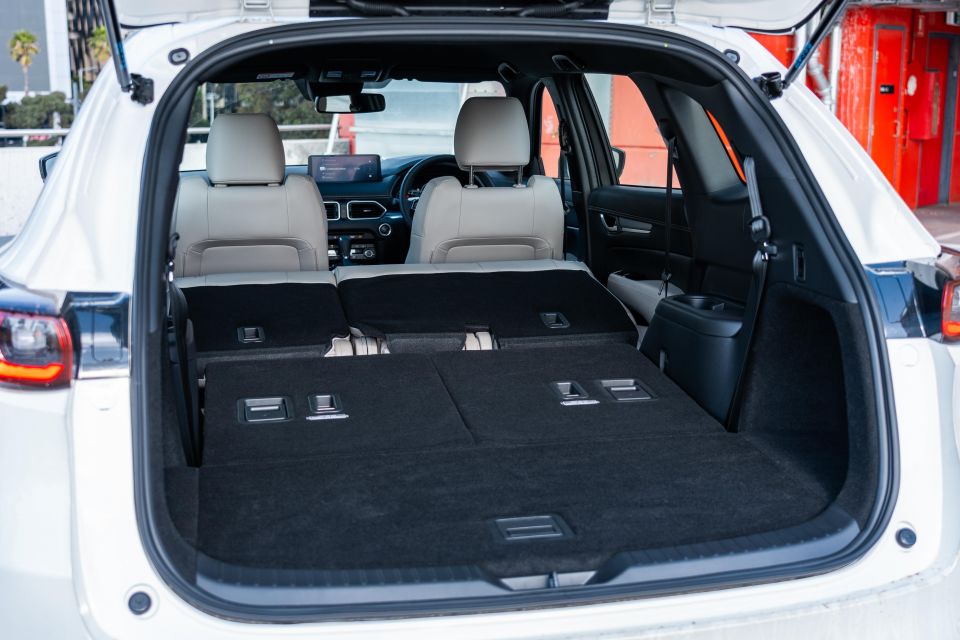
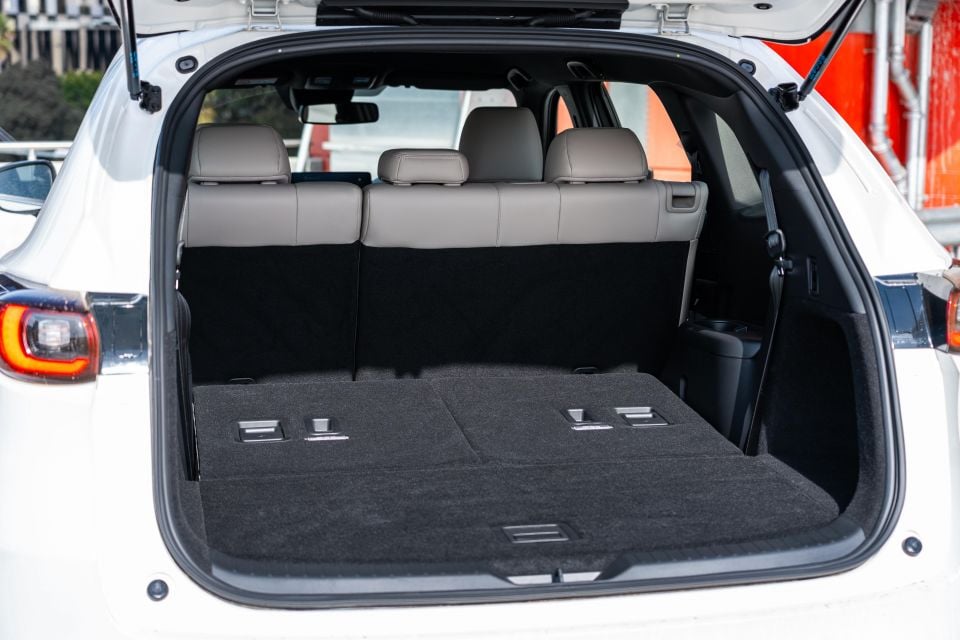
By giving the CX-8 such similar styling to the CX-9, Mazda has given it similar issues. The curve to the roofline and tailgate eats into headroom slightly, and makes the cargo bay a less practical shape.
Luggage capacity is 209L with all three rows up, measured to the roof, 775L when the third row is folded down and 1727L with the second and third rows folded.
The CX-8 D35 is powered by a 2.2-litre twin-turbofour-cylinder diesel producing 140kW of power and 450Nm of torque.
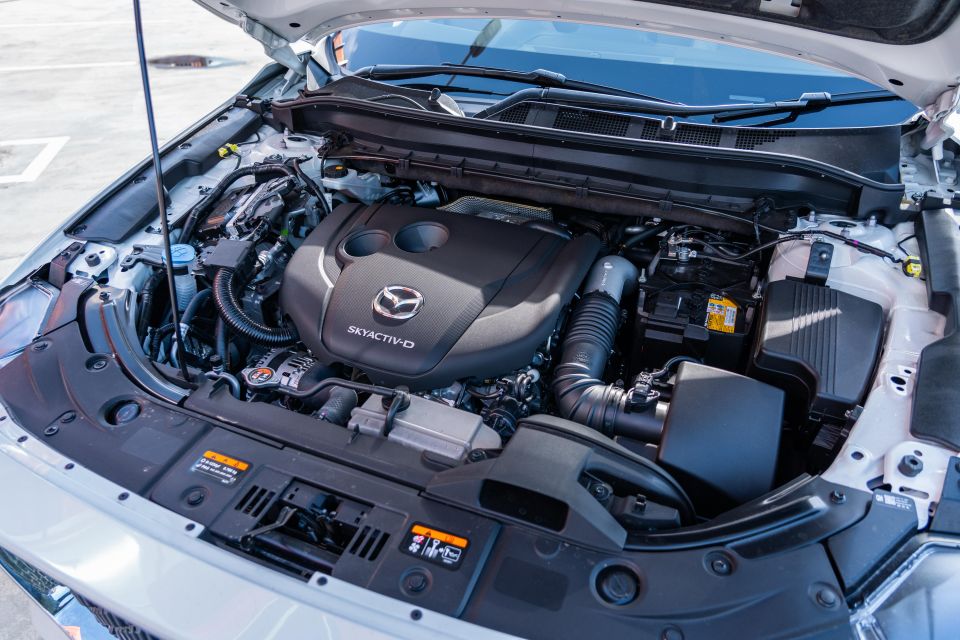
That’s the same power as the base petrol engine, but a whopping 198Nm more torque. It also compares favourably with the 148kW/440Nm 2.2-litre TD in the rival Santa Fe and Sorento. Drive is sent to all four wheels via a six-speed automatic transmission.
The official combined cycle claim is 6.0L/100km, and we averaged 6.5L/100km on a loop comprising inner-city, suburban and highway driving. Over the course of our time with the vehicle, this went down further to 6.4L/100km.
Sure, there’s a premium over the petrol engine, but the petrol uses more fuel (it’s rated at 8.1L/100km) and is a less appealing engine overall, plus comes only with front-wheel drive.
I’ll be honest: I’ve never been the biggest fan of diesels, at least not four-cylinder ones. The typically good fuel economy and low-end torque is always welcome; although, there’s arguably greater complexity.
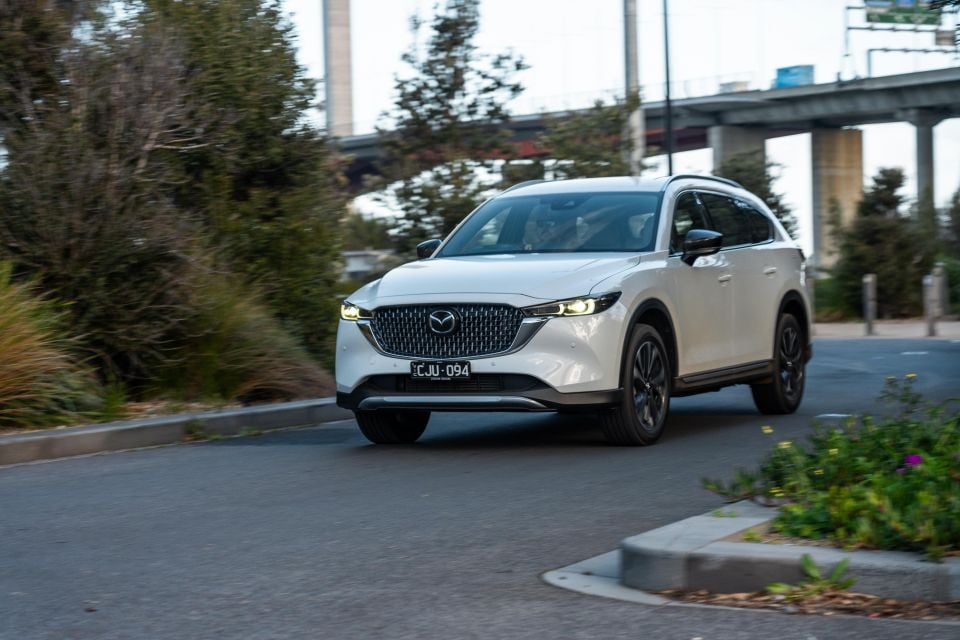
But what bothers me is the way they sound. Four-cylinder diesel engines in particular have an engine note that irritates me, and while many modern diesels have come a long way in refinement, some of that clatter still seeps in.
Imagine my surprise, then, when I found myself actually enjoying not only the responsiveness of the CX-8’s turbo-diesel, but also the way it sounds.
There’s a tiny bit of clatter on startup, and like most Mazda engines it’s a bit noisier when it’s cold. But punch it and this turbo-diesel has a sporty note that sounds more like a turbocharged petrol engine than your typical oil-burner.
You can see why Mazda thought offering this engine in the old 3 Astina XD warm hatch made sense.
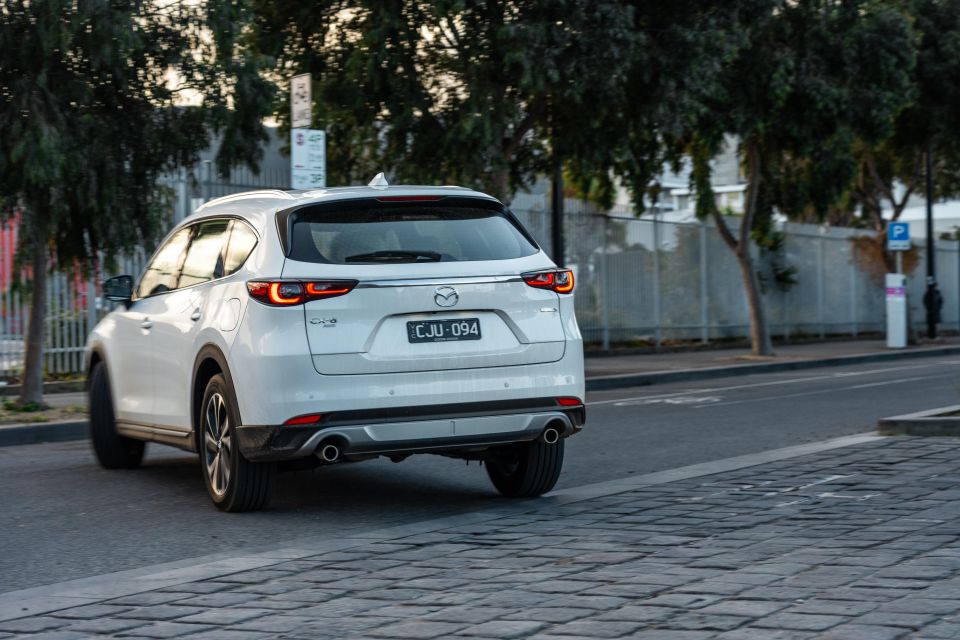
There are no distracting noises coming from the engine bay, and noise suppression overall is quite good with little road noise. There’s only a little bit of tyre roar at highway speeds.
The six-speed automatic transmission may look a few gears short nowadays, but there’s no arguing with how adeptly it works. It never gets caught out, and its shifts are always smooth.
The ride errs on the firm side, but it smooths out bumps and craggy roads nicely. The body also settles fairly quickly over patchier pavement and undulations, and the CX-8 doesn’t wallow.
There’s a bit of body roll in corners, but that’s to be expected from an SUV this size.
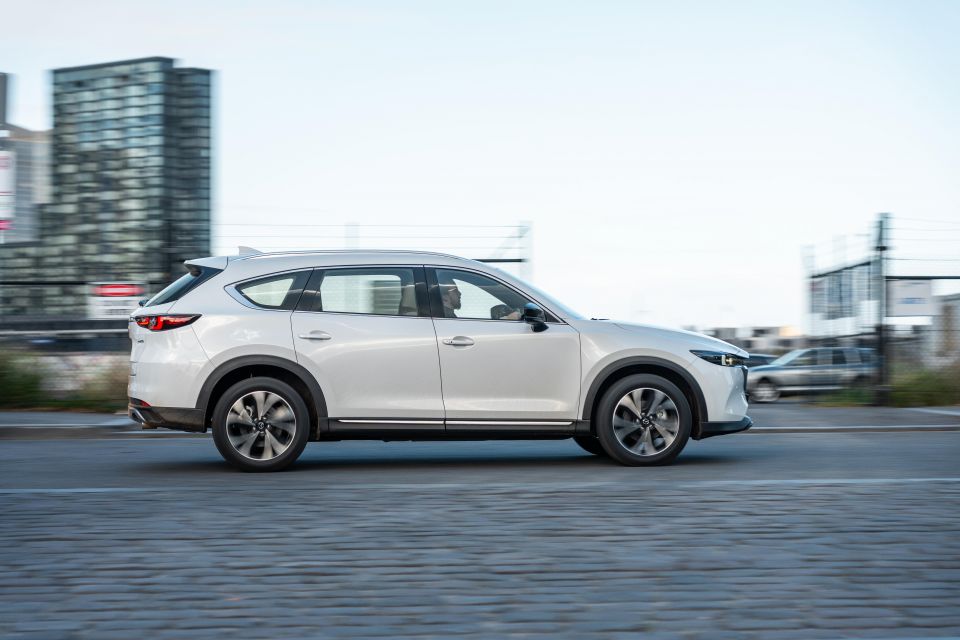
Where expert car reviews meet expert car buying – CarExpert gives you trusted advice, personalised service and real savings on your next new car.
The responsive powertrain means overtaking is a stress-free activity, at least with one person on board.
Even if you wanted more responsiveness, there’s no Sport mode to call upon – you can select between only Normal and Off-Road. There are paddle shifters; however, if you want to manually shift gears.
The steering has a satisfying weighting that’s consistent at all speeds; although, this does mean it doesn’t really lighten up at low speeds. You may need to do a little more arm-twirling in the CX-8, then, to get into a parking space, though we’d stop short of calling the tiller heavy.
There’s no lane-centring in the Touring Active, but there’s a lane-keep assist system that helps keep you from veering into another lane without being overbearing all the time.
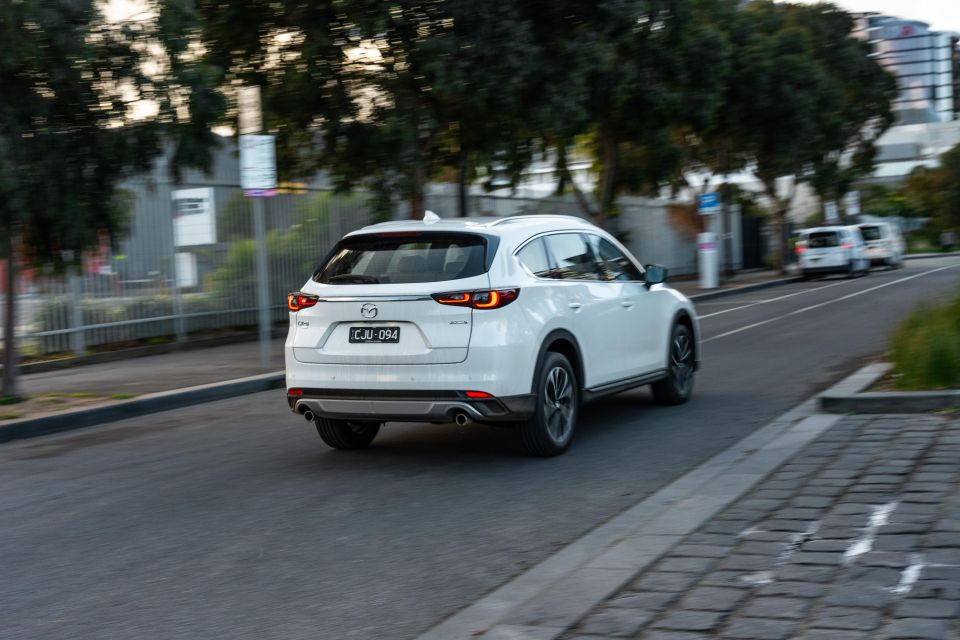
The adaptive cruise control turns on with a single button press, and the speed can be easily seen in the handy head-up display. The traffic sign recognition system will also display stop signs and the like in addition to the posted speed limit.
There’s an automatic stop/start system, and it also avoids feeling too intrusive like similar systems in some rivals. You need to firmly push the brake to activate it, however.
The steering-guided headlights with automatic high-beam work a treat, particularly on a winding road.
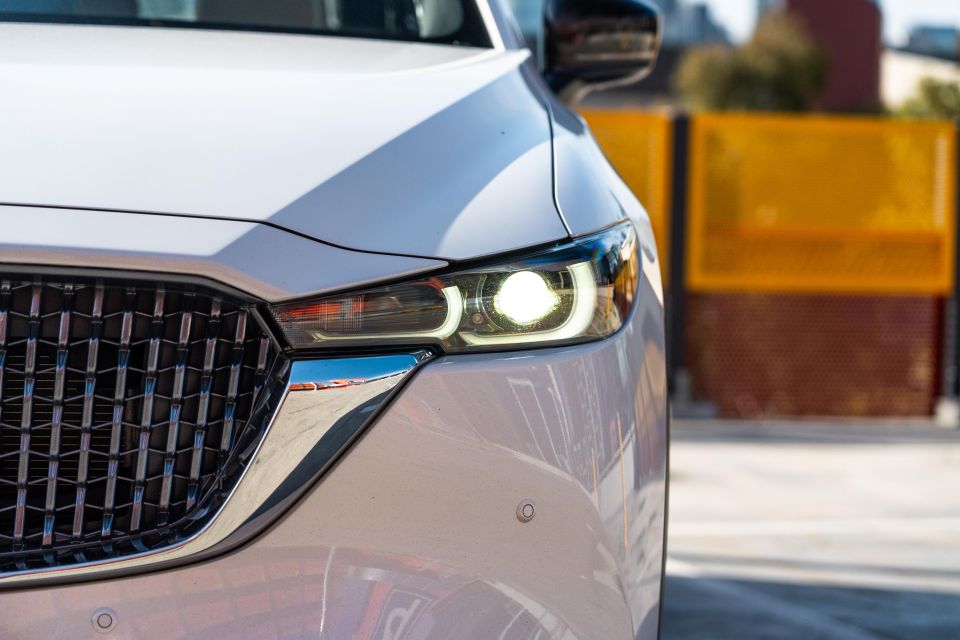

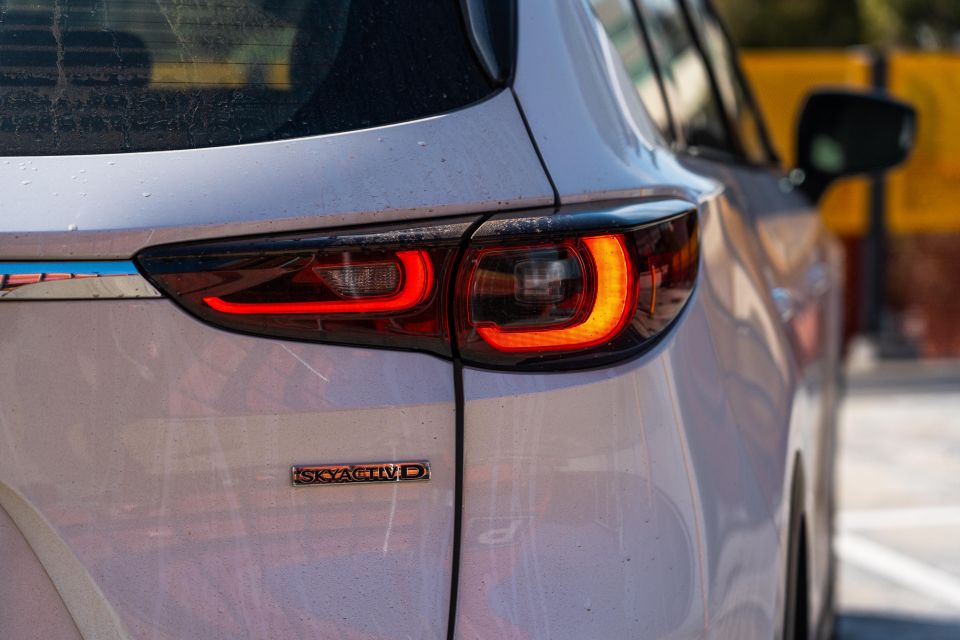

CX-8 Sport highlights:
CX-8 Touring adds:

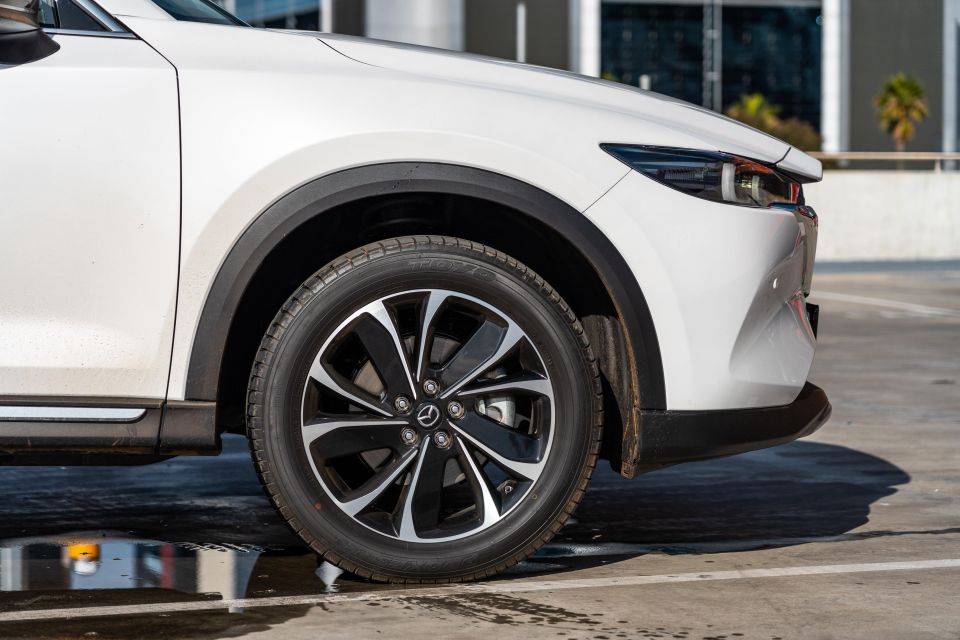
CX-8 Touring Active adds:
There are GT SP, Asaki and Asaki LE trim levels above the Touring Active.
To step up to the GT SP, you’ll pay an extra $2000 but lose all-wheel drive and drop down to a naturally aspirated petrol engine. The diesel-powered GT SP, in contrast, costs an extra $8650 over the D35 Touring Active.
That extra outlay does get you a power tailgate, power sunroof, 10-speaker Bose sound system, wireless phone charger and some extra convenience features, but the Touring Active strikes a good balance in terms of value – if you’re fine with cloth trim.
The Mazda CX-8 has a five-star ANCAP safety rating based on testing conducted in 2018.
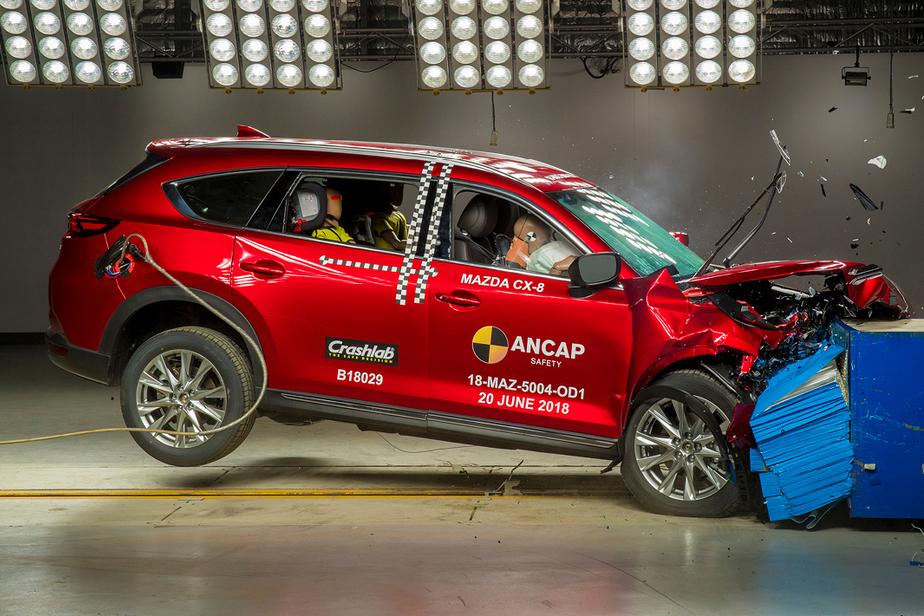
It received an adult occupant protection rating of 96 per cent, a child occupant protection rating of 87 per cent, a vulnerable road user protection rating of 72 per cent, and a safety assist rating of 73 per cent.
All 2023 CX-8 models receive the following safety equipment:
Touring and up get front parking sensors, while GT SP and up get Cruising and Traffic Support and the Asaki and Asaki LE also receive a surround-view camera.
The Mazda CX-8 is backed by Mazda’s five-year, unlimited-kilometre warranty.
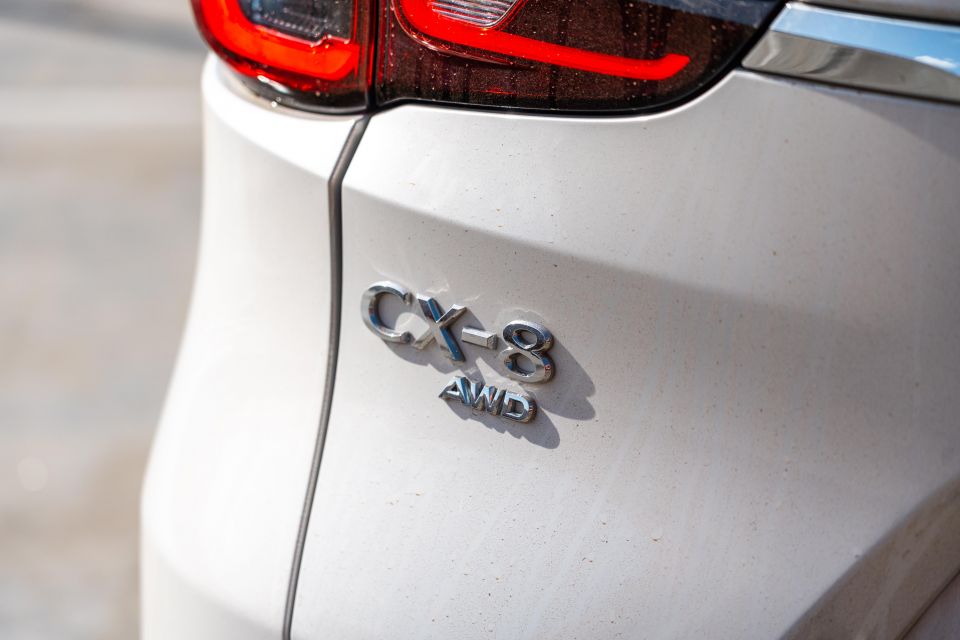
Mazda still requires servicing every 12 months or 10,000km: fairly short intervals. The first seven services are capped at $368, $569, $566, $569, $368, $768, and $368, or $3576 over seven years.
A Santa Fe diesel costs $3470 and a Sorento diesel $3513 over the same period and both have longer 12-month/15,000km intervals.
If you like the idea of a refined mid-sized crossover with a gutsy turbo-diesel engine and a third row good for at least occasional use, the CX-8 makes a strong case for itself.
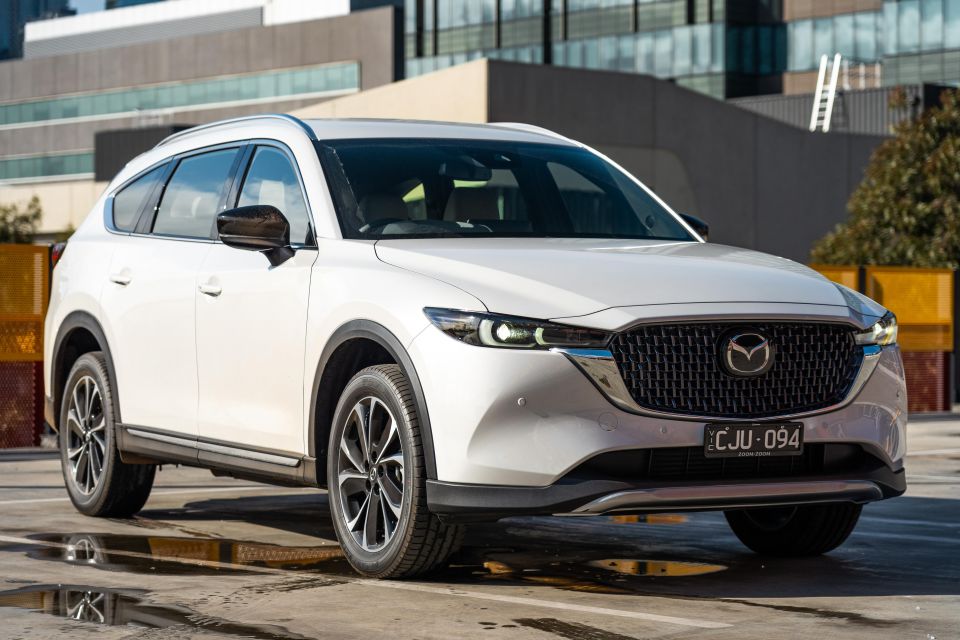
The powertrain is even better than that of a Santa Fe or Sorento; though, its third row is a less appealing place in which to sit than those rivals.
It boasts a quiet, well-appointed cabin, while it has a firm yet comfortable ride and nice steering feel that stops this SUV from feeling too much like a boring family bus.
It’s a shame to see the CX-8 go, as we strongly suspect the upcoming CX-80 will be a more expensive model. Mazda is therefore killing its most affordable three-row SUV, and also axing a delightful turbo-diesel engine along with it.
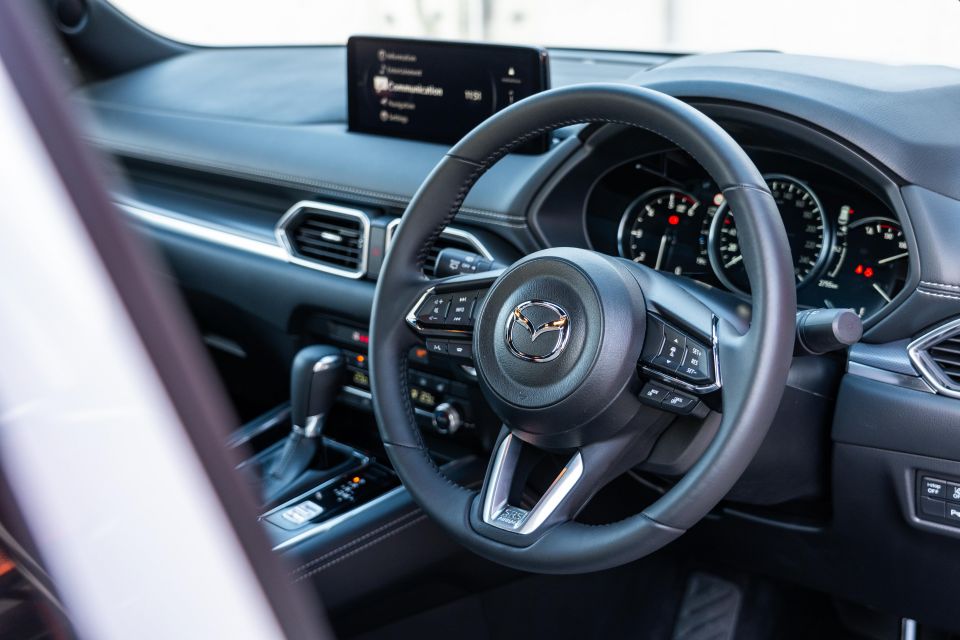
With no diesel-powered, three-row Outlander, CR-V or X-Trail crossovers available and the diesel Tiguan Allspace dead, the CX-8’s strongest competition comes from the Santa Fe and Sorento.
Like the CX-8, the Koreans make for compelling options, and the Santa Fe is in runout mode too, ahead of a bold new model arriving in 2024.
We’d recommend checking out all three before signing on the dotted line.

Click the images for the full gallery
BUY: Mazda CX-8 MORE: Everything Mazda CX-8
Where expert car reviews meet expert car buying – CarExpert gives you trusted advice, personalised service and real savings on your next new car.
William Stopford is an automotive journalist with a passion for mainstream cars, automotive history and overseas auto markets.


Matt Campbell
5 Hours Ago


William Stopford
21 Hours Ago


Josh Nevett
22 Hours Ago


Ben Zachariah
2 Days Ago


CarExpert.com.au
2 Days Ago


Damion Smy
2 Days Ago